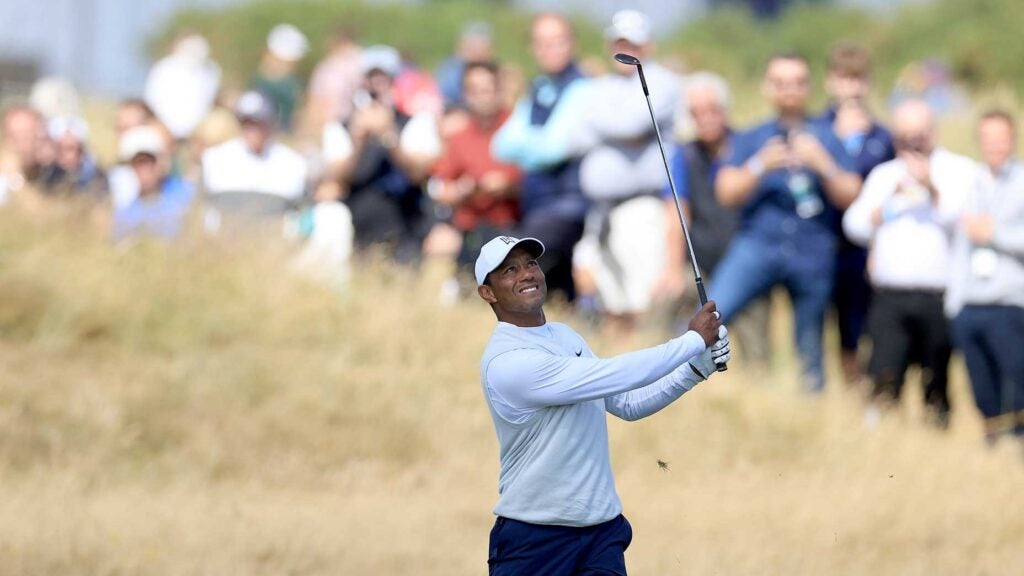Tiger Woods, a few hundred yards away, was talking when Tommy Fleetwood stuffed an iron to about 15 feet. Woods had been dishing on his “key to golf” — from a 15-time major winner, that’s a loaded collection of words, ain’t it? — and Fleetwood had likely just given him a visual.
Woods isn’t playing this week; plantar fasciitis in his right foot, in the same leg in which he’s undergone multiple surgeries over the past year-plus, forced him to withdraw from the Hero World Challenge. But he’s the host, and he’s still doing host things at Albany Golf Club, and that means jumping into Golf Channel’s booth for an hour during Thursday’s first round.
Where analyst Paul Azinger asked Woods if he practiced any part of his game more than the others.
And that funneled into his key.
“I loved to chip and putt,” Woods began on the broadcast. “That was one of my biggest things. But I found early on in my career that I needed to become a better player from 150 yards on in. I had a lot of opportunities from that distance. The key to golf is hitting the ball pin high.”
Woods then expanded on the thought. Pin, apparently to Woods, is in the eye of the beholder.
“Whatever the number that you choose to hit, it doesn’t have to be pin high to the flag, it’s just pin high to your number. The good ones can always hit it on their number, whether they choose to be pin high to the flag or not. It’s whatever number you choose. You can have wind and rain and all different variables with heat, cold, wind, all those variables add into it. That’s the feel that it takes to be a really good iron player.”
Let’s try to unpack this. For one, whether or not you agree with the analysis, Woods seemed to enjoy talking shop, though this makes sense. You probably do, too. It’s a comfort thing. It’s what you know best. And so you’re bound to give at least a thoughtful answer, as Woods did.
Woods’ key, of course, is simple — just hit your target! — and it isn’t — just hit your target? But identifying your ‘pin’ and hitting it on a line parallel to it — or at least trying to — can unlock some scores. And Woods did qualify his statement by saying that the idea is what “it takes to be a really good iron player.” As Fleetwood is. Though he parred the 18th after his iron in, it was a simple two-putt.
Later in the broadcast, Woods offered up more on game planning. Justin Thomas, a Woods friend, had found his tee shot on the par-4 16th stuck in a bush, when analyst John Wood wanted to know about risk.
“Tiger, one of the great things I thought you were at, when you got in trouble, you rarely made doubles,” Wood began on the broadcast. “Rarely. You found a way to get back in play, get it back in position and play percentage golf. You weren’t the riskiest player in the world. How did you start doing that in your game?”
“That was straight from dad,” Woods said. “Dad always said that you need to make bogey or worse — somehow figure it out — because it will only take you one hole to get it back. You make double, it takes you two holes to get it back. You’re rarely going to make eagle, especially when I was little. And so just whatever you do, just grind it out, try to make a bogey and you can get it right back on the next hole and get it going again.”
“Somehow figure it out” stands out, doesn’t it?
All of this doesn’t mean to avoid risk completely. Woods himself did take chances. But the thought is, when you do, do the math. Though Thomas struggled on Thursday.
After his drive into the bush, he took a drop to the right, then hit into a greenside bunker.
And he made a double bogey.


